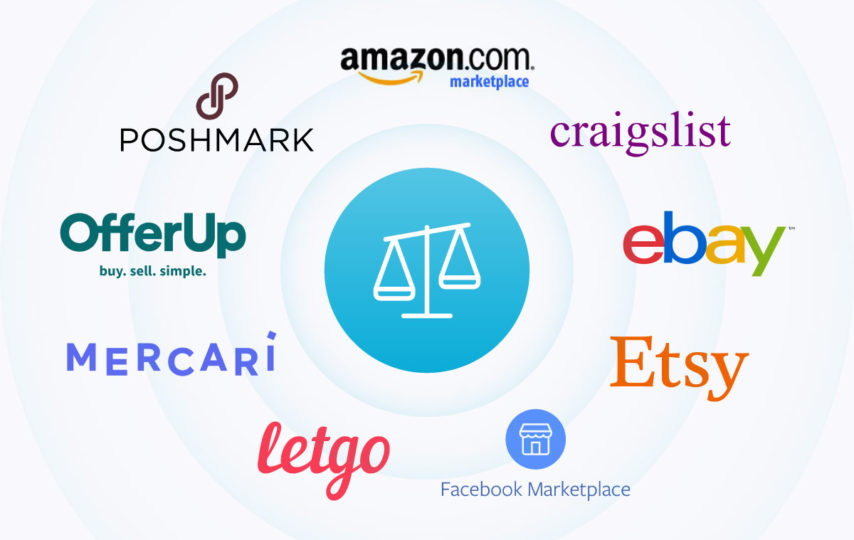- Product
- Solution for
For Your Industry
- Plans & Pricing
- Company
- Resources
For Your Industry
The world of e-commerce is constantly evolving, and staying ahead of the game is crucial for businesses looking to succeed in this competitive landscape. As we approach 2024, it’s essential to be aware of the upcoming trends that will shape the e-commerce industry. In this article, we’ll explore the top e-commerce trends expected for 2024, providing you with valuable insights and strategies to ensure your business stays on top.
Mobile shopping has been witnessing a sustained increase in popularity for several years, and there is no indication of this trend slowing down. In fact, the growth of mobile commerce is expected to continue into 2024, underscoring the growing importance for businesses to enhance their websites for mobile devices. A mobile-responsive website ensures that customers can conveniently browse and make purchases with just a few taps on their smartphones. Prioritizing a seamless mobile shopping experience not only attracts more customers but also positions your business ahead of competitors.
To create a mobile website that is user-friendly, the emphasis should be on simplicity and ease of navigation. Simplify the checkout process, reduce page loading times, and optimize your content for smaller screens. Additionally, it’s worth considering the implementation of mobile payment options like digital wallets, which have gained popularity among online shoppers. Embracing the surge in mobile commerce allows you to cater to the increasing number of customers who prefer shopping via their smartphones.

Social media platforms have evolved beyond mere communication tools and have now become potent sales platforms. The year 2024 is anticipated to witness a significant surge in social commerce, offering businesses fresh opportunities to connect with and captivate their customer base. Popular platforms like Instagram, Facebook, and TikTok have seamlessly integrated shopping experiences, enabling users to make purchases without exiting the app. For business owners, it is imperative to harness the potential of social media and utilize it as a revenue-generating channel.
To effectively seize the advantages of social commerce, consider investing in establishing a robust social media presence. Create a content strategy that incorporates product showcases, captivating videos, and collaborations with influencers. Active engagement with your audience by promptly responding to comments and messages is essential. Additionally, make the most of social media advertising to expand your reach and promote your products. By harnessing the influential impact of social media, you can tap into a vast reservoir of potential customers and boost your e-commerce sales.
In the rapidly evolving world of online commerce, customers are increasingly demanding swift and convenient delivery choices. Same-day delivery has emerged as a pivotal factor, offering companies a competitive advantage by meeting these elevated expectations. Given the proliferation of on-demand platforms like Uber Eats and Deliveroo, consumers have grown accustomed to receiving their orders within a matter of hours. To maintain a competitive edge, enterprises must adopt same-day delivery as the new standard.
Establishing a same-day delivery service necessitates meticulous planning and seamless coordination. Collaborate with trustworthy courier services that specialize in prompt and effective deliveries. Streamline your logistical operations to ensure on-time order processing. Moreover, contemplate eco-friendly alternatives, such as carbon-neutral couriers, to align with sustainability trends. By offering same-day delivery, you can enhance the customer experience and distinguish your company from rivals.

Artificial intelligence (AI) and machine learning have brought about a profound transformation in the e-commerce sector, and their influence is set to continue expanding in 2024. Machine learning algorithms have the ability to process extensive volumes of customer data, enabling the delivery of personalized shopping experiences. Through the utilization of these technologies, enterprises can offer customized product suggestions, tailor marketing campaigns, and deliver personalized customer support.
To harness the capabilities of machine learning, commence by gathering and scrutinizing customer data. Discern patterns and preferences in order to craft tailored experiences. Integrate recommendation systems that propose relevant products based on customers’ browsing and purchase history. Furthermore, employ AI-driven chatbots to furnish immediate assistance and aid. Through the personalization of the customer journey, you can foster deeper connections with your clientele and stimulate sales.
Voice-activated searches have become increasingly popular in recent years due to advancements in voice recognition technology. With the growing adoption of smart speakers and virtual assistants by consumers, it is essential for businesses to adapt their e-commerce sites for voice search to remain relevant. The field of voice commerce is expected to reach significant prominence by 2024, underscoring the importance of this adaptation.
To enhance your site for voice search, emphasize the use of natural language patterns and conversational queries. Research and integrate long-tail keywords that are in line with voice search queries. Organize your content to deliver concise and informative responses to common questions. Furthermore, make sure that your website is well-optimized for mobile devices, as voice searches are frequently conducted on smartphones. Embracing voice search optimization can enable you to tap into a growing market and boost organic traffic to your e-commerce platform.

The potential for Augmented Reality (AR) to transform the e-commerce industry is immense, as it can provide customers with immersive shopping experiences. Through AR technology, customers can preview products in their own surroundings before making a purchase, thereby minimizing uncertainties and enhancing overall satisfaction. In the year 2024, businesses that incorporate AR into their e-commerce strategies will gain a significant competitive edge.
To harness the power of AR, contemplate the integration of AR features into your product pages or mobile applications. Enable customers to virtually try on clothing, visualize how furniture would appear in their homes, or observe how a product seamlessly integrates into their daily routines. By offering this interactive and captivating experience, you can heighten customer confidence and reduce the occurrence of product returns. Embracing AR technology serves as a testament to your dedication to innovation and customer contentment.
In recent years, there has been a noticeable surge in the popularity of subscription services, and it is anticipated that this trend will continue to grow in 2024. These services enable businesses to deliver tailored and convenient experiences to their customers while maintaining a stable revenue stream. Industries such as meal kits, beauty products, and software have particularly benefited from the effectiveness of subscription models.
To successfully launch a subscription service, the key lies in delivering value and convenience to your customers. You can achieve this by offering exclusive benefits like discounts, early access to new products, and personalized recommendations. It’s crucial to establish a user-friendly and seamless subscription management system to elevate the overall customer experience. By embracing subscription services, you have the opportunity to nurture long-lasting customer relationships and drive recurring revenue.

As the awareness of environmental concerns grows among consumers, it is imperative for businesses to make sustainability a central focus in order to meet their evolving expectations. Looking ahead to 2024, sustainability is set to exert a significant influence on the e-commerce industry. Customers are increasingly on the lookout for eco-conscious alternatives and are actively supporting companies that prioritize ethical and environmentally responsible practices.
In order to stay in tune with these sustainability trends, consider embracing sustainable packaging materials, minimizing carbon emissions related to shipping, and securing products from ethically responsible suppliers. Additionally, it is vital to convey your unwavering commitment to sustainability through your marketing channels, highlighting your eco-friendly initiatives. By demonstrating your dedication to environmental responsibility, you can attract environmentally conscious customers and distinguish your business from competitors.
Online marketplaces such as Amazon and eBay have firmly established their supremacy in the e-commerce sector, and this trajectory is anticipated to persist through 2024. These platforms afford businesses access to an extensive customer base and user-friendly selling options, allowing you to extend your outreach and enhance your sales potential.
To efficiently harness the potential of online marketplaces, it’s crucial to optimize your product listings by incorporating pertinent keywords and high-quality images. To distinguish yourself from competitors, offer competitive pricing and exceptional customer service. Additionally, contemplate making use of the fulfillment services offered by these platforms to streamline your operations. Through the strategic utilization of online marketplaces, you can broaden your market reach and drive increased sales.

B2B e-commerce is currently undergoing substantial growth, and this upward trend is projected to persist in 2024. With the emergence of Generation Z and Millennials in influential decision-making roles, B2B purchasers are increasingly embracing online buying practices. To tap into this expanding market, companies must tailor their strategies to the distinct requirements of B2B clients.
To excel in the realm of B2B e-commerce, it is imperative to provide adjustable pricing structures for bulk orders, personalized delivery choices, and adaptable payment methods. Furthermore, it is vital to create a seamless and efficient purchasing process that enables businesses to effortlessly navigate your online platform and place orders. By addressing the specific demands of B2B customers, you can attract and retain valuable corporate clientele.
To sum it up, the e-commerce sector is on the brink of substantial expansion and evolution in 2024. Embracing these prominent trends enables companies to maintain a competitive edge and optimize their achievements. Whether it’s fine-tuning for mobile shopping or capitalizing on augmented reality technology, each trend offers distinct chances to improve the customer journey, boost sales, and cultivate lasting customer connections. By remaining proactive and adjusting to these trends, you can ensure your business not only survives but thrives in the ever-changing landscape of e-commerce.













Missing an important marketplace?
Send us your request to add it!